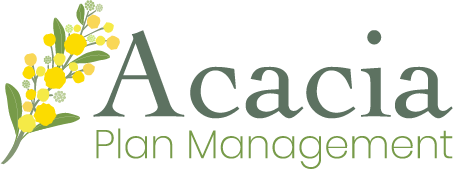Did you know that your Core Supports budget is the most versatile of all your funding? If you have Core Supports in your NDIS plan, you can use your budget in many creative ways. Knowing how to use your budget in more flexible ways takes some inside knowledge. Let us help you explore some of the more creative ways you may be able to use this section of your budget.
Depending on your disability and its impact on your daily life, there is loads of support you may be able to access through your NDIS plan. Your Core Supports funding is designed to support your everyday activities. Many participants typically use it to pay support workers who assist with everyday tasks like household chores or attending appointments, however it can also be used more flexibly to support your needs and help you reach your goals.
What this mean is that within your Core Supports budget, you can move money from one category to another, with some exceptions. While you are unable to move funding across your different budgets, within the Core Supports ‘bucket’ there is flexibility as long as it supports your disability, plan and goals. If you’re unsure about how this can work for you, contact your Acacia Plan Management plan manager and we are happy to help you explore what is possible.
What is included in my Core Supports budget again?
Before we explain how your Core Supports budget can be used more creatively, let’s revisit what it includes. Core Supports are one of the NDIS’s three support budgets, your other two are Capacity Building Supports and Capital Supports.
Core Supports assist you with everyday activities and the basic support you need to live your life and achieve your goals. This can include things like paying a house cleaner and gardener, purchasing continence pads or having a support worker accompany you on a shopping trip.
It is important to remember your Core Supports budget is flexible. You can use your funding across each of your Core Supports categories, except for transport. This flexibility can create many exciting possibilities that you may have never considered!
We explore five ways you may be able to flexibly use your Core Supports funding. If any of these tickle your fancy, contact your plan manager to find out more.
1. House and garden maintenance
Your disability may make it very difficult or impossible to undertake many household tasks that are essential to living a dignified life in your own home. This can include cleaning the house, mowing the lawn, changing a broken lightbulb and the associated costs with hiring a tradesperson to help.
In good news, you can claim these supports from your Core Supports funding if your disability prevents you from doing these jobs yourself and if the supports meet the reasonable and necessary criteria.
2. Short Term Accommodation (STA)
STA is accommodation at a different place to your usual home. You can access funding (in the right circumstances) for up to 14 days at a time, up to a total of 28 days per year.
The cost of your STA – personal care, accommodation, food, and activities you and the provider agree to – may be able to be covered by your Core Supports budget.
STA can be used for a short stay away from home, to meet new friends, develop new skills or try new things. It can also be used for respite, which can help participants and their informal supports take a break, with the aim of maintaining current living arrangements.
3. Meal preparation and delivery
If you receive assistance from a support worker who cooks and serves your daily meals and they’re unavailable for a period of time, or you’re looking to develop your independence in preparing your own meals at home, you may be able to use your Core Supports funding to have meals prepared and delivered to your door.
If meal preparation isn’t currently funded in your plan but it meets the reasonable and necessary criteria, you may be able to claim it from Core Supports funding for 90 days. After that time, you’ll need written approval from the NDIA to continue claiming meal preparation, or you might need to submit a change of circumstances form.
If meal preparation isn’t included in your plan and you would like to know more, contact your plan manager to discuss what may be possible.
4. Low-cost assistive technology
Assistive technology is defined as equipment or devices that help you perform actions you can’t do – or are limited in doing – because of your disability. Incorporating assistive technology can help do those tasks more easily or more safely.
There are thousands of products on the market to make your daily life simpler. If assistive technology costs less than $1500, it can often be claimed through your Core Supports funding but it pays to double check if it’s covered first. Assistive technology must meet the NDIA’s reasonable and necessary criteria.
5. Disability related health supports
If you receive a supports that helps you participate in everyday activities, you may be able to use your Core Supports funding for a range of disability related health supports.
The list below provides an indication of the majority of disability-related health supports that may be required by NDIS participants; however, it is not an exhaustive list. Disability-related health supports are expected to assist in areas such as:
- Dysphagia: for participants who have trouble eating, drinking or swallowing on a daily basis.
- Respiratory: for participants requiring help with their breathing and maintenance of their respiratory health, including any associated care, comfort, planning or supports
- Nutrition: for participants requiring help with the way they eat or understanding the food they need.
- Diabetes: for participants who have daily problems with how much sugar is in their blood.
- Continence: for participants who need daily assistance with toileting (bladder and bowel).
- Wound & Pressure Care: for participants who need daily wound and pressure care (resulting from pressure wounds or swollen limbs).
- Podiatry: for participants who require help looking after their feet, ankles and lower limbs.
- Epilepsy: for participants who need daily help managing the way epilepsy affects the way their brain and nerves work.
- Botox and Splinting: It is unlikely Botox and splinting supports will be reasonable and necessary to include in a plan, as these are generally provided in a clinical setting.
There are a range of supports that may relate to disability but are more appropriately funded by the health system. Some examples include end of life/palliative care, direct care supports accessed within a hospital and emergency electricity generators.
If you would like to learn more…
We have prepared this factsheet explaining what each of your NDIS plan funding categories are and examples of the supports included within each. Our team of friendly plan managers are happy to discuss your plan and how you may be able to use your Core Supports in a more creative way by calling them during business hours on 07 3517 5190.





